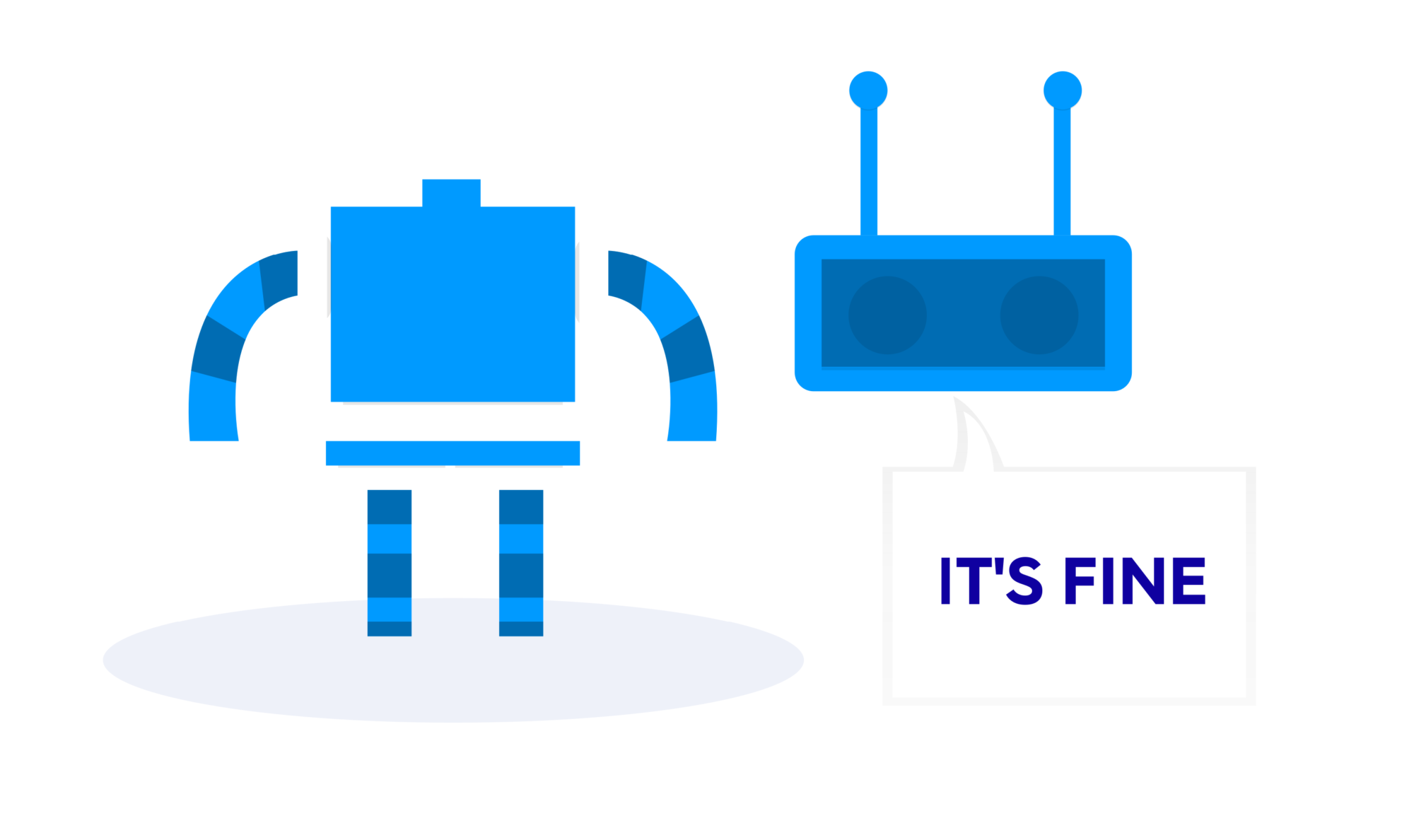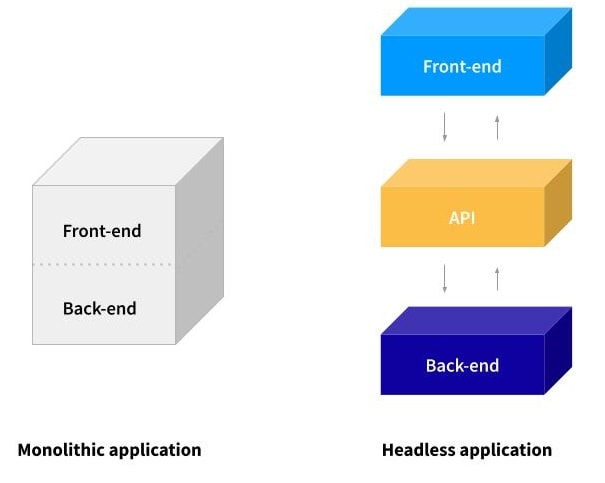
Ecommerce technology has changed a lot in recent years. One noticeable trend is that ecommerce platforms are becoming only one of the elements of a company’s ecommerce infrastructure, consisting of ERP, PIM, CRM and storefront systems. There has been a lot of talk lately about so-called headless ecommerce, so in this post we take a closer look at this phenomenon, especially since implementation of GraphQL API in the recent Shopsys Framework v9.0.0 version has led to us building 100% headless ecommerce projects.
Monolithic architecture is no longer enough
Most traditional ecommerce platforms have a so-called monolithic architecture, which can be difficult to improve or upgrade down the road. Over the last few years, ecommerce businesses have been growing rapidly, introducing newer and newer improvements. This need to constantly change has opened up a new approach to the concept of headless ecommerce.
Traditional online stores consist of two connected stacks: front-end and back-end. Front-end is the UI layer that the customer deals with, while the back-end is a store engine that is responsible for business logic and databases. In traditional ecommerce architecture, each change on the front-end side (for example, changing the operation mechanism of the shopping cart) will also require changes on the back-end side. However, headless ecommerce applications introduce a separation of front-end (UI) and back-end (business logic).

The benefits of the headless approach
Tailored for omnichannel world
Nowadays, before making a purchase a customer may look at a brand or product many times on numerous devices, including laptops, mobile devices, and smart TVs. Companies are struggling to make these transitions between different sales channels convenient and seamless for the customer. Customers expect the same high-level shopping experience regardless of which sales channel they use, but content or offer should be displayed differently on desktops or Smart TVs. This is where the headless architecture comes in handy.
Ecommerce companies can use many storefronts for all sales channels they use now or will be using in the future. New interfaces don’t have to be directed only to customers, but can be dedicated mobile applications for sales assistants.
Easier development and better performance
The popularity of headless architecture is in line with the trend of an increasing division of developer’s positions into front-end and back-end specialists. Companies using this architecture can recruit programmers strictly specializing in only one of these areas and can capitalize on these competencies.
In addition, by using headless architecture companies can freely choose the technologies (programming languages, frameworks) that they want to be used on back-end and front-end development. Thanks to versioned APIs both dev teams can prioritize their tasks and work on what they need to work on without interfering with the other team.
Last but not least, introducing a headless approach to your ecommerce business will boost your site performance and provide less load on the database server. This is because the browser can process queries and calculations already handled in the front-end of the website instead of going to the backend part or to the database, which translates to less load on the database server.
Quick integrations
Because headless ecommerce is API-driven, it’s much easier to integrate it with different platforms and third-party apps. It’s a visible trend in software technology that monolithic architectures are replaced with structures of many specialized apps or services (e.g. microservices). In terms of functionality, scalability and flexibility the headless, API-driven system will always outperform monolithic applications.
Headless also helps companies to save a lot of time in two dimensions. First, thanks to the use of API it ensures quick connections, and secondly, the company instead of losing time on programming platforms’ features from scratch can “get” them by integrating with other software.
Drawbacks of Headless Ecommerce
Because of the nature of headless approaches, they tend to involve a larger initial investment in an ecommerce project. The choice of such a platform means that at the very beginning one loses the front-end part, which often has to be rewritten by programmers or appropriately customized using the framework. Of course, due to the better UX and higher conversion level, project’s implemented this way will have huge payoffs in the long term (as opposed to short term).
Theoretically, headless doesn’t limit the ways in which a company is able to offer content to users, but if the company does not use JS Frameworks, such as Vue Storefront or React Storefront, then it will mean creating an ecommerce related page from scratch. This can also generate costs. Therefore, this solution will work best in larger online stores that either have their own in-house team or outsource some programming jobs to ecommerce agencies.
Considering going headless?
We are currently building an ecommerce project with headless architecture for one of the global leaders in its category with tens of Euro million of revenue yearly. If you would like to know what exact benefits headless technology can bring to your business, contact us for a non-binding consultation.



